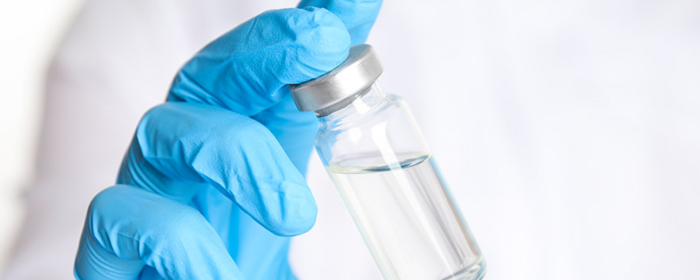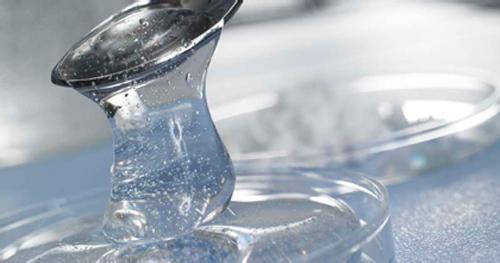
Hyaluronic acid (HA) is a well-known ingredient in the field of medical aesthetics. As a naturally occurring polysaccharide, it is widely present in various tissues throughout the human body. Known for its excellent biocompatibility and safety, hyaluronic acid also boasts remarkable properties such as moisture retention, viscoelasticity, anti-inflammatory effects, and lubrication. These qualities have made it a widely applied substance in tissue engineering, skin repair, drug delivery, and more.
However, in practice, hyaluronic acid is a complex compound. One of the key factors that differentiate its efficacy is molecular weight, which can lead to various effects depending on its size. I’ve previously discussed this topic in detail, so if you’re interested, feel free to click the link below to learn more: High vs. Low Hyaluronic Acid: How Molecular Weight Affects the Efficacy.
Generally, we categorize hyaluronic acid into different grades based on its intended use. The most common ones include medical grade, food grade, cosmetic grade, and injectable grade. So, what exactly makes these grades different, and how do their distinct properties lead to their varied uses?
Different Grades Have Different Purity Requirements
First, different grades of hyaluronic acid require varying levels of purity, primarily due to the differences in safety requirements.
Medical-grade hyaluronic acid has the highest purity standards. It is used in injections, pharmaceutical formulations, and other therapeutic purposes, such as in ophthalmic surgery, joint disease treatment, and soft tissue fillers. In medical products, sodium hyaluronate is added to serve functions like tissue filling, lubrication, and preventing adhesions. Such applications bypass the skin or mucosal barrier and come into direct contact with live cells. Even trace amounts of impurities can activate the immune system, leading to inflammation, allergic reactions, hemolysis, and other adverse effects. As a result, the selection of raw materials is more stringent, requiring pharmaceutical-grade sodium hyaluronate to ensure safety.
Medical-grade sodium hyaluronate strictly controls key factors that could cause negative reactions, including protein impurities, endotoxins, and hemolytic activity. Additionally, the acceptable levels for these factors may vary depending on how deeply the substance comes into contact with tissues. These stringent criteria are typical for raw pharmaceutical materials, and any hyaluronic acid used in medication must comply with national pharmacopeia standards.
For cosmetic-grade hyaluronic acid, since skincare products are applied topically, the safety requirements are not as stringent as for medical use. However, for sensitive skin types, impurities could still trigger skin reactions. Therefore, cosmetic-grade hyaluronic acid still demands high purity. Since these products generally act on the surface of intact skin, the skin’s natural immune function can effectively prevent harmful reactions. Moreover, cosmetic ingredients are not easily absorbed into the deeper layers where live cells reside. As a result, minor impurities do not significantly impact the safety or effectiveness of the product.
Food-grade hyaluronic acid, on the other hand, has relatively lower purity standards. It is used as a nutritional supplement in food additives. When taken orally, sodium hyaluronate helps replenish body fluids, improve joint function, and protect the gastric mucosa, among other benefits. While the purity requirements for food-grade hyaluronic acid are not as high, there are stricter standards for microbial contamination, given the extreme pH levels and other bacteria in the digestive system. Since the body can effectively process certain proteins, lower purity levels are sufficient for most manufacturers.

Differences in Molecular Weight Across Different Grades of Hyaluronic Acid
In addition to purity, different grades of hyaluronic acid have varying molecular weight ranges that suit their specific applications.
Medical-grade hyaluronic acid typically ranges from 500,000 to 2,000,000 Da. Generally, the larger the molecular weight, the stronger its moisture-retention capacity and the slower its degradation in the body. High molecular weight hyaluronic acid provides strong hydration and viscoelasticity, which makes it ideal for applications requiring long-term moisture and lubrication, such as in ophthalmic surgeries or joint injections.
Food-grade hyaluronic acid usually has a low molecular weight, between 10,000 and 500,000 Da. This is mainly due to the body’s absorption needs. Low molecular weight hyaluronic acid is more efficiently absorbed by the digestive tract, making it easier for the body to process. Although the lower molecular weight aids absorption, it also means reduced moisture retention and viscoelastic properties compared to higher molecular weight counterparts.
Cosmetic-grade hyaluronic acid covers a broader molecular weight range, from 10,000 to 2,000,000 Da, with low, medium, and high molecular weights being used depending on the specific product needs.
- Low molecular weight (10,000 – 100,000 Da): Penetrates deeper into the skin, promoting hydration and repair.
- Medium molecular weight (100,000 – 500,000 Da): Ideal for surface-level hydration, enhancing skin elasticity and softness.
- High molecular weight (500,000 – 2,000,000 Da): Primarily forms a moisture barrier on the skin’s surface, helping to lock in moisture and prevent water loss.
Depending on the desired function of the product, cosmetic formulations use different molecular weights of hyaluronic acid. Low molecular weight HA is typically used for deeper hydration, while high molecular weight HA serves as a surface-level moisture barrier.
Conclusion
In summary, the differences in hyaluronic acid grades primarily lie in their purity and molecular weight, which determine their suitability for various uses. Medical-grade hyaluronic acid demands the highest purity and typically uses high molecular weight for its prolonged hydrating and lubricating effects in medical treatments. Food-grade hyaluronic acid prioritizes efficient absorption with lower molecular weights, while cosmetic-grade hyaluronic acid takes advantage of varying molecular weights to deliver targeted skincare benefits. Understanding these differences helps ensure that the right type of hyaluronic acid is used for the right purpose, maximizing both safety and efficacy.
Stanford Chemical Company (SCC) is a premium supplier of hyaluronic acid, offering safe sodium hyaluronate powders (Cosmetics Grade, Food Grade, Injection Grade, Medical Grade) in a variety of molecular weights. For more information or specific applications, please visit our home page or Get A Quote.
